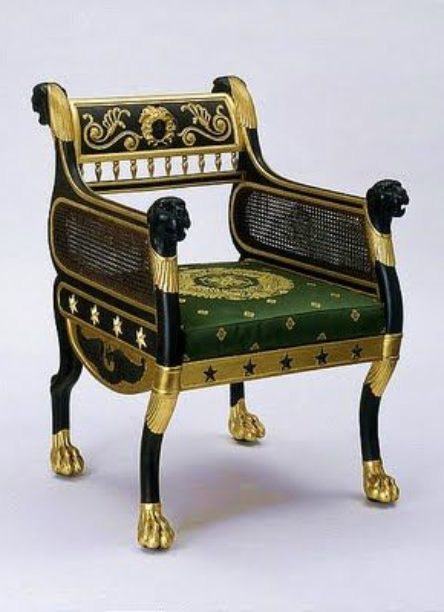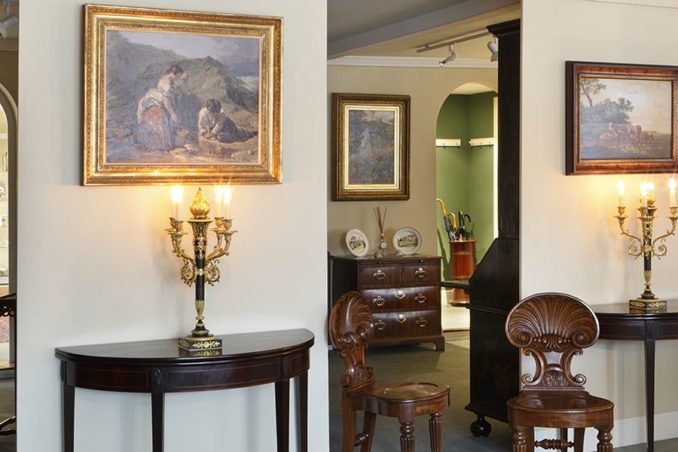
James Peill, author and curator for Goodwood House, discussed the attention-to-detail, style and important architects of the time. He told us, for example, about the Dutchman, Thomas Hope (1769–1831), influential as a designer, design reformer and collector. Born in Amsterdam, Hope inherited a vast wealth as well as his family’s tradition of collecting. He went on to collect on a grand scale and became an innovative designer who helped define what we now understand as Regency Style. Hope was unique amongst his set in that he opened up his house to the public to show off his style and what he had acquired on his grand tours. He wrote a book called Household Furniture and Interior Decoration that he gave to ‘gentlemen’ of his class and furniture makers. Hope’s success was in part due to the wide distribution of this book.
France has been, and still is, a great influencer on style. Many pieces can be traced back to the country, from silverware to furniture. I especially loved learning that colour was highly regarded in the 18th and 19th centuries as it indicated wealth. When affluent English people went on grand tours, they often brought back influences from Greece or Pompeii, where colour is supreme. Italian fashion houses, for instance, always bring huge amounts of colour into the industry. And if you look at other major fashion houses today, they are also full of colour. It seems the use of colour has long been important and well regarded.

Interestingly, traditional English brown antiques that are sometimes considered ‘boring’ were actually quite colourful when they were first made. Wood naturally has many beautiful colours; mahogany, for instance, brings in red and satin wood yellow. In quality pieces, you will find these colours more alive than others.
Good antiques dealers like Lennox Cato Antiques and Works of Art can help you source such pieces. Lennox Cato, who runs the business with his wife, shared some very practical advice about when to sell a piece and when to keep it. In his opinion, if you have a piece stored in the attic, which you never use, sell it and buy something you will enjoy. If you buy a piece it should be something you love and will use, not something you are ‘supposed’ to like but don’t.
Daniel Franks, from the renowned silver dealership I. Franks, was brilliant at telling us about the best eras for silver. He recommended the Georgian period, which had French influences, and the Victorian period, where influences came from all over. To test the quality of a piece of silver, a fork, for example, balance it on your finger. If it stays, it is well balanced. Silver is like jewellery for the home and if you would like to have a full table set, Daniel Franks is your man.
Finally, for anyone thinking of buying an antique piece of furniture, silver or art – look for the LAPADA golden chandelier symbol on the dealer’s website. It is a sign the person selling the products has experience, quality stock and knowledge of their subject.


